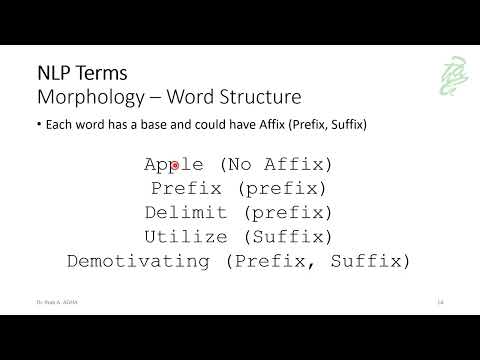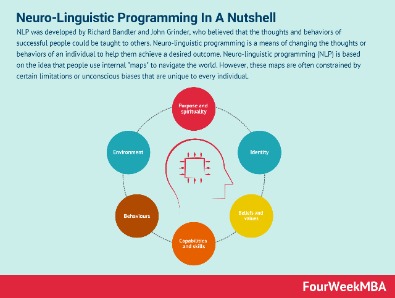Guide To Natural Language Processing
Let’s now pre-process our datasets using the function we implemented above. Now that we have our main objective cleared up, let’s put universal sentence encoders into action! The entire tutorial is available in my GitHub repository as a Jupyter Notebook. I love using Paperspace where you can spin up notebooks in the cloud without needing to worry about configuring instances manually. Al. in their paper ‘Distributed Representations of Sentences and Documents’. Herein, they propose the Paragraph Vector, an unsupervised algorithm that learns fixed-length feature embeddings from variable-length pieces of texts, such as sentences, paragraphs, and documents.
- Dive into the world of AI and Machine Learning with Simplilearn’s Post Graduate Program in AI and Machine Learning, in partnership with Purdue University.
- The language models are trained on large volumes of data that allow precision depending on the context.
- We often see an enterprise deploy analytics to different parts of the organization, without coupling that with skills training.
- Technical solutions to leverage low resource clinical datasets include augmentation [70], out-of-domain pre-training [68, 70], and meta-learning [119, 143].
Here are some examples of the innovations that are driving the evolution of AI tools and services. The current decade has so far been dominated by the advent of generative AI, which can produce new content based on a user’s prompt. These prompts often take the form of text, but they can also be images, videos, design blueprints, music or any other input that the AI system can process. Output content can range from essays to problem-solving explanations to realistic images based on pictures of a person. The modern field of AI is widely cited as beginning in 1956 during a summer conference at Dartmouth College.
Content suggestions
Here, some data labeling has occurred, assisting the model to more accurately identify different concepts. The Keras network will expect 200 tokens long integer vectors with a vocabulary of [0,20000). The HuggingFace Datasets has a dataset viewer site, where samples of the dataset are presented. This site shows the splits of the data, link to the original website, citation and examples.
What is natural language processing? NLP explained – PC Guide – For The Latest PC Hardware & Tech News
What is natural language processing? NLP explained.
Posted: Tue, 05 Dec 2023 08:00:00 GMT [source]
By using multiple models in concert, their combination produces more robust results than a single model (e.g. support vector machine, Naive Bayes). We construct random forest algorithms (i.e. multiple random decision trees) and use the aggregates of each tree for the final prediction. This process can be used for classification as well as regression problems and follows a random bagging strategy. Rather than building all of your NLP tools from scratch, NLTK provides all common NLP tasks so you can jump right in. This customer feedback can be used to help fix flaws and issues with products, identify aspects or features that customers love and help spot general trends.
Search
This will likely translate into systems that understand more complex language patterns and deliver automated but accurate technical support or instructions for assembling or repairing a product. However, early systems required training, they were slow, cumbersome to use and prone to errors. It wasn’t until the introduction of supervised and unsupervised machine learning in the early 2000s, and then the introduction of neural nets around 2010, that the field began to advance in a significant way. Universal Sentence Embeddings are definitely a huge step forward in enabling transfer learning for diverse NLP tasks. In fact, we have seen models like ELMo, Universal Sentence Encoder, ULMFiT have indeed made headlines by showcasing that pre-trained models can be used to achieve state-of-the-art results on NLP tasks.
Transformer vs RNN in NLP: A Comparative Analysis – Appinventiv
Transformer vs RNN in NLP: A Comparative Analysis.
Posted: Wed, 31 Jul 2024 07:00:00 GMT [source]
Also known as opinion mining, sentiment analysis is concerned with the identification, extraction, and analysis of opinions, sentiments, attitudes, and emotions in the given data. NLP contributes to sentiment analysis through feature extraction, pre-trained embedding through BERT or GPT, sentiment classification, and domain adaptation. Since ChatGPT its introduction, researchers have used the toolkit to advance practical, real-world QNLP applications such as automated dialogue, text mining, language translation, text-to-speech, language generation, and bioinformatics. Natural language processing uses artificial intelligence to replicate human speech and text on computing devices.
Let’s delve into the technical nuances of how Generative AI can be harnessed across various domains, backed by practical examples and code snippets. Automating tasks with ML can save companies time and money, and ML models can handle tasks at a scale that would be impossible to manage manually. Although ML has gained popularity recently, especially with the rise of generative AI, the practice has been around for decades. ML is generally considered to date back to 1943, when logician Walter Pitts and neuroscientist Warren McCulloch published the first mathematical model of a neural network. This, alongside other computational advancements, opened the door for modern ML algorithms and techniques. In the coming years, the technology is poised to become even smarter, more contextual and more human-like.
AI models for various language understanding tasks have been dramatically improved due to the rise in scale and scope of NLP data sets and have set the benchmark for other models. Organizations often use these comprehensive NLP packages in combination with data sets they already have available to retrain the last level of the NLP model. This enables bots to be more fine-tuned to specific customers and business.
Numerous MHIs have been shown to be effective, including psychosocial, behavioral, pharmacological, and telemedicine [6,7,8]. Despite their strengths, MHIs suffer from systemic issues that limit their efficacy and ability to meet increasing demand [9, 10]. You can foun additiona information about ai customer service and artificial intelligence and NLP. The first is the lack of objective and easily administered diagnostics, which burden an already scarce clinical workforce [11] with diagnostic methods that require extensive training. Widespread dissemination of MHIs has shown reduced effect sizes [13], not readily addressable through supervision and current quality assurance practices [14,15,16].
A Guide to Demystifying Universal Sentence Encoders
The purpose is to generate coherent and contextually relevant text based on the input of varying emotions, sentiments, opinions, and types. The language model, generative adversarial networks, and sequence-to-sequence models are used for text generation. We’re only in the early days of seeing what new applications will come from generative AI and NLP. In addition to the above improvements, Lambeq has a new neural-based parser named Bobcat.
One of the biggest challenges in natural language processing (NLP) is the shortage of training data. Because NLP is a diversified field with many distinct tasks, most task-specific datasets contain only a few thousand or a few hundred thousand human-labeled training examples. However, modern deep learning-based NLP models see benefits from much larger amounts of data, improving when trained on millions, or billions, of annotated training examples.
One such alternative is a data enclave where researchers are securely provided access to data, rather than distributing data to researchers under a data use agreement [167]. This approach gives the data provider more control over data access and data transmission and has demonstrated some success [168]. The systematic ChatGPT App review identified six clinical categories important to intervention research for which successful NLP applications have been developed [151,152,153,154,155]. While each individually reflects a significant proof-of-concept application relevant to MHI, all operate simultaneously as factors in any treatment outcome.
AI requires specialized hardware and software for writing and training machine learning algorithms. No single programming language is used exclusively in AI, but Python, R, Java, C++ and Julia are all popular languages among AI developers. Tools like the Turing Natural Language Generation from Microsoft and the M2M-100 model from Facebook have made it much easier to embed translation into chatbots with less data. For example, the Facebook model has been trained on 2,200 languages and can directly translate any pair of 100 languages without using English data. The only scenarios in which the’ invisible characters’ attack proved less effective were against toxic content, Named Entity Recognition (NER), and sentiment analysis models.
Question answering is an activity where we attempt to generate answers to user questions automatically based on what knowledge sources are there. For NLP models, understanding the sense of questions and gathering appropriate information is possible as they can read textual data. Natural language processing application of QA systems is used in digital assistants, chatbots, and search engines to react to users’ questions. Transformers for natural language processing can also help improve sentiment analysis by determining the sentiment expressed in a piece of text. Additionally, transformers for natural language processing utilize parallel computing resources to process sequences in parallel. This parallel processing capability drastically reduces the time required for training and inference, making Transformers much more efficient, especially for large datasets.
How Does Natural Language Processing Work?
Further examples include speech recognition, machine translation, syntactic analysis, spam detection, and word removal. ChatGPT is the most prominent example of natural language processing on the web. Surpassing 100 million users in under 2 months, OpenAI’s AI chat bot was briefly the fastest app in history to do so, until being surpassed by Instagram’s Threads. Transformers will also see increased use in domain-specific applications, improving accuracy and relevance in fields like healthcare, finance, and legal services. Furthermore, efforts to address ethical concerns, break down language barriers, and mitigate biases will enhance the accessibility and reliability of these models, facilitating more inclusive global communication. Transformers have significantly improved machine translation (the task of translating text from one language to another).
Multiple startup companies have similar chatbot technologies, but without the spotlight ChatGPT has received. In other countries where the platform is available, the minimum age is 13 unless otherwise specified by local laws. The name change also made sense from a marketing perspective, as Google aims to expand its AI services.
In short, stemming is typically faster as it simply chops off the end of the word, but without understanding the word’s context. Lemmatizing is slower but more accurate because it takes an informed analysis with the word’s context in mind. According to many market research organizations, most help desk inquiries relate to password resets or common examples of nlp issues with website or technology access. Companies are using NLP systems to handle inbound support requests as well as better route support tickets to higher-tier agents. AI bots are also learning to remember conversations with customers, even if they occurred weeks or months prior, and can use that information to deliver more tailored content.
Here’s the exciting part — natural language processing (NLP) is stepping onto the scene. While there is some overlap between NLP and ML — particularly in how NLP relies on ML algorithms and deep learning — simpler NLP tasks can be performed without ML. But for organizations handling more complex tasks and interested in achieving the best results with NLP, incorporating ML is often recommended. Learning a programming language, such as Python, will assist you in getting started with Natural Language Processing (NLP) since it provides solid libraries and frameworks for NLP tasks. Familiarize yourself with fundamental concepts such as tokenization, part-of-speech tagging, and text classification. Explore popular NLP libraries like NLTK and spaCy, and experiment with sample datasets and tutorials to build basic NLP applications.



